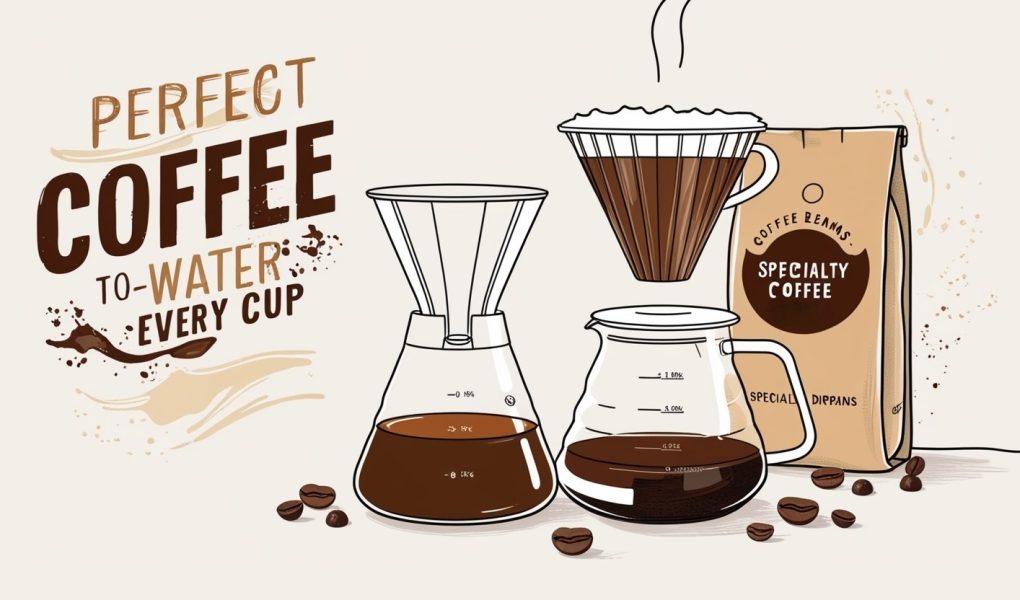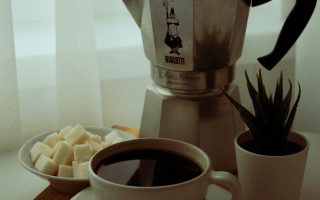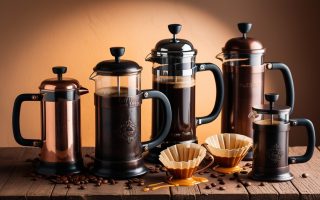The right coffee-to-water ratio is one of the most important steps in brewing a great cup. It’s not just about how much coffee you use—it’s about how the balance between coffee and water impacts the extraction and brings out the flavors you want. A slight shift in ratio can transform your cup from bright and lively to rich and bold, or even from smooth and balanced to bitter and overpowering. That’s why understanding these ratios is key to finding the taste you love.
Every brewing method has its sweet spot. Whether you’re making a French press, pour-over, espresso, or cold brew, each style requires a unique coffee-to-water ratio to achieve the best results. Ratios like 1:15 or 1:17 offer balance and clarity, while more concentrated ratios—like those used for espresso—deliver intensity and punch. But these guidelines aren’t set in stone; tweaking your ratio can make all the difference in fine-tuning your brew to match your personal preference.
This guide will explore how different ratios work for various brewing methods and offer tips on adjusting them to create your perfect cup. Once you start experimenting with ratios, you’ll discover how small changes can unlock new flavors, making each cup feel like an adventure.
Understanding Coffee Brewing Ratios
A coffee brewing ratio refers to the relationship between the amount of coffee used and the volume of water added. This ratio is essential because it determines the strength, flavor, and balance of your brew. Think of it as the foundation—get it right, and your coffee will taste just the way you like. Even a slight change in the ratio can shift your cup from smooth and sweet to bitter or weak, making it crucial to pay attention to these details.
Ratios are often expressed as something like 1:15 or 1:17, meaning one part coffee to 15 or 17 parts water. A lower ratio—more coffee to less water—creates a stronger, bolder brew, while a higher ratio results in a lighter, more delicate cup. Different brewing methods call for different ratios; espresso, for example, uses a concentrated ratio of around 1:2, while cold brew relies on a much stronger ratio, typically 1:4, because it is meant to be diluted before drinking.
Finding the right ratio takes a bit of experimentation, as it depends on personal taste, the grind size, and the roast level of your beans. Once you understand these ratios, you can tweak your recipe to unlock the perfect flavors, making your morning cup just right every time.
Popular Brewing Ratios by Method
Each brewing method calls for its own coffee-to-water ratio to achieve the best results, tailoring the brew’s strength and flavor to match the style.
- French Press works well with a 1:15 ratio—one part coffee to 15 parts water—producing a rich, full-bodied cup. This method emphasizes boldness, making it ideal for those who enjoy a heavier brew.
- Pour-over methods, like V60 or Chemex, often use a 1:16 ratio to strike a balance between clarity and depth. This ratio allows the water to extract the delicate flavors from the coffee, resulting in a clean, nuanced cup.
- AeroPress is highly versatile, with ratios ranging from 1:10 for a more concentrated shot to 1:17 for a lighter, smoother brew. Adjusting the ratio here can dramatically change the character of the drink.
- Espresso, on the other hand, requires a much more concentrated 1:2 or 1:3 ratio, as the quick extraction time demands a higher coffee concentration for bold, intense flavors.
- Cold brew starts with a powerful 1:4 ratio, as it’s brewed over a long period and intended to be diluted before serving, creating a smooth, low-acidity experience.
Understanding these ratios helps you unlock the full potential of each brewing method, allowing you to explore different strengths and flavors with precision.
Tips for Adjusting Brewing Ratios
Finding the right brewing ratio is a personal journey, and adjusting it allows you to fine-tune your coffee to match your taste. If your coffee feels too strong or overpowering, try increasing the water slightly, moving from a 1:15 to a 1:17 ratio. This subtle change will mellow the flavor without losing the essence of the coffee. On the other hand, if your brew tastes weak or thin, decreasing the ratio to 1:14 can give it more body and richness.
Different beans and roasts also affect the ideal ratio. Light roasts often benefit from a higher water ratio to bring out their delicate notes, while dark roasts can handle a more concentrated ratio, as they naturally carry bolder flavors. Similarly, a finer grind may need a bit more water to avoid over-extraction, while a coarser grind can withstand a lower ratio to maintain strength.
Using a kitchen scale ensures consistency with every cup, giving you control over each adjustment. Start small—tweak the ratio by a single point and note how it affects the taste. The key is to experiment and listen to your palate. Over time, you’ll learn what works best, turning your coffee routine into a ritual of discovery.
Conclusion
Mastering coffee brewing ratios unlocks the potential to create a cup that perfectly matches your preferences. Whether you prefer a strong espresso, a smooth pour-over, or a light cold brew, adjusting the balance between coffee and water gives you control over every detail. Small tweaks—like increasing the ratio for clarity or lowering it for more intensity—can make all the difference.
These ratios aren’t rigid rules but guidelines to explore. The beauty lies in experimentation—finding the ideal ratio based on your beans, roast, and mood. By using a scale to stay consistent and refining your adjustments over time, you’ll gradually discover what works best for you. With practice, these small shifts become second nature, turning each brew into a personal expression of taste.
Ultimately, the perfect ratio is the one that brings you the most satisfaction. Whether you’re making coffee for yourself or sharing it with friends, understanding and adjusting your brewing ratios transforms coffee from a simple habit into a rewarding ritual. Enjoy the process, trust your palate, and embrace the journey toward your perfect cup.



